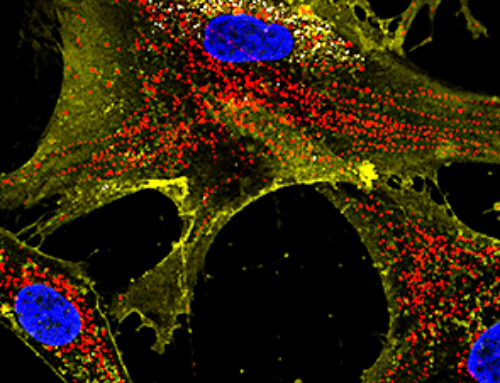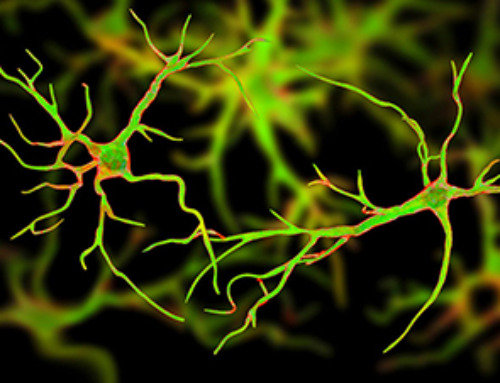Research indicates that COVID-19 survivors face doubled risks of severe cardiac events for years after recovery, especially if hospitalized.
People with A, B, or AB blood types are particularly vulnerable, highlighting the need for personalized approaches to heart health post-COVID.
COVID-19 and Cardiovascular Risk
A history of COVID-19 can double the risk of heart attack, stroke, or death, according to new research led by Cleveland Clinic and the University of Southern California.
The study revealed that individuals with any type of COVID-19 infection were twice as likely to experience a major cardiac event, such as a heart attack, stroke, or death, for up to three years following their diagnosis. This risk escalated significantly for patients who were hospitalized for COVID-19, surpassing even the influence of a previous history of heart disease.
Genetic Factors and COVID-19 Complications
Further genetic analysis indicated that individuals with non-O blood types (such as A, B, or AB) were twice as likely to suffer a severe cardiovascular event after COVID-19 compared to those with type O blood.
Published on October 9 in the journal Arteriosclerosis, Thrombosis, and Vascular Biology, the researchers used UK Biobank data from 10,005 people who had COVID-19 and 217,730 people who did not get infected between February to December 2020.
Global Implications of Cardiac Risks Post-COVID
"Worldwide over a billion people have already experienced COVID-19. The findings reported are not a small effect in a small subgroup," said co-senior study author Stanley Hazen, M.D., Ph.D., chair of Cardiovascular and Metabolic Sciences in Cleveland Clinic's Lerner Research Institute and co-section head of Preventive Cardiology. "The results included nearly a quarter million people and point to a finding of global healthcare importance that promises to translate into a rise in cardiovascular disease globally."
Certain genetic variants are already linked to coronary artery disease, heart attack and COVID-19 infection. The researchers completed a genetic analysis to see if any of these known genetic variants contribute to elevated coronary artery disease risk after COVID-19. None of the known genetic variants were drivers of the enhanced cardiovascular events observed post COVID-19. Instead, the data highlighted an association between elevated risk and blood type.
Research Findings and Future Directions
Previous research has shown that people who have A, B, or AB blood types were also more susceptible to contracting COVID-19.
"These findings reveal while it's an upper respiratory tract infection, COVID-19 has a variety of health implications and underscores that we should consider history of prior COVID-19 infection when formulating cardiovascular disease preventive plans and goals," said Dr. Hazen.
"The association uncovered by our research indicates a potential interaction between the virus and the piece of our genetic code that determines blood type and signals the need for further investigation," said Dr. Hazen. "A better understanding of what COVID-19 does at the molecular level may potentially teach us about pathways linked to cardiovascular disease risk."
Hooman Allayee, PhD, of USC's Keck School of Medicine, was co-senior author of the paper.
"Our data suggesting that risk of heart attacks and strokes was especially higher among COVID-19 patients with A, B, or AB blood types has significant clinical implications," Dr. Allayee said.
"Given our collective observations and that 60% of the world's population have these non-O blood types, our study raises important questions about whether more aggressive cardiovascular risk reduction efforts should be considered, possibly by taking into consideration an individual's genetic makeup."
The findings show that the long-term risk associated with COVID-19 "continues to pose a significant public health burden" and that further investigation is needed, according to the authors.
For more on this research, see How COVID Continues to Threaten Your Heart Years After Infection.
Reference: "COVID-19 Is a Coronary Artery Disease Risk Equivalent and Exhibits a Genetic Interaction With ABO Blood Type" 9 October 2024, Arteriosclerosis Thrombosis and Vascular Biology.
DOI: 10.1161/ATVBAHA.124.321001
This work was supported by the National Institutes of Health [R01HL148110, R01HL168493, U54HL170326, P30ES007048, R01DK132735, P01HL147823 and R01HL147883].
Disclosures: Dr. Hazen is named as co-inventor on pending and issued patents held by Cleveland Clinic in relation to cardiovascular diagnostics and therapeutics.
News
New skin-permeable polymer delivers insulin without needles
A breakthrough zwitterionic polymer slips through the skin’s toughest barriers, carrying insulin deep into tissue and normalizing blood sugar, offering patients a painless alternative to daily injections. A recent study published in the journal Nature examines [...]
Multifunctional Nanogels: A Breakthrough in Antibacterial Strategies
Antibiotic resistance is a growing concern - from human health to crop survival. A new study successfully uses nanogels to target and almost entirely inhibit the bacteria P. Aeruginosa. Recently published in Angewandte Chemie, the study [...]
Nanoflowers rejuvenate old and damaged human cells by replacing their mitochondria
Biomedical researchers at Texas A&M University may have discovered a way to stop or even reverse the decline of cellular energy production—a finding that could have revolutionary effects across medicine. Dr. Akhilesh K. Gaharwar [...]
The Stunning New Push to Protect the Invisible 99% of Life
Scientists worldwide have joined forces to build the first-ever roadmap for conserving Earth’s vast invisible majority—microbes. Their new IUCN Specialist Group reframes conservation by elevating microbial life to the same urgency as plants and [...]
Scientists Find a Way to Help the Brain Clear Alzheimer’s Plaques Naturally
Scientists have discovered that the brain may have a built-in way to fight Alzheimer’s. By activating a protein called Sox9, researchers were able to switch on star-shaped brain cells known as astrocytes and turn them into [...]
Vision can be rebooted in adults with amblyopia, study suggests
Temporarily anesthetizing the retina briefly reverts the activity of the visual system to that observed in early development and enables growth of responses to the amblyopic eye, new research shows. In the common vision [...]
Ultrasound-activated Nanoparticles Kill Liver Cancer and Activate Immune System
A new ultrasound-guided nanotherapy wipes out liver tumors while training the immune system to keep them from coming back. The study, published in Nano Today, introduces a biodegradable nanoparticle system that combines sonodynamic therapy and cell [...]
Magnetic nanoparticles that successfully navigate complex blood vessels may be ready for clinical trials
Every year, 12 million people worldwide suffer a stroke; many die or are permanently impaired. Currently, drugs are administered to dissolve the thrombus that blocks the blood vessel. These drugs spread throughout the entire [...]
Reviving Exhausted T Cells Sparks Powerful Cancer Tumor Elimination
Scientists have discovered how tumors secretly drain the energy from T cells—the immune system’s main cancer fighters—and how blocking that process can bring them back to life. The team found that cancer cells use [...]
Very low LDL-cholesterol correlates to fewer heart problems after stroke
Brigham and Women's Hospital's TIMI Study Group reports that in patients with prior ischemic stroke, very low achieved LDL-cholesterol correlated with fewer major adverse cardiovascular events and fewer recurrent strokes, without an apparent increase [...]
“Great Unified Microscope” Reveals Hidden Micro and Nano Worlds Inside Living Cells
University of Tokyo researchers have created a powerful new microscope that captures both forward- and back-scattered light at once, letting scientists see everything from large cell structures to tiny nanoscale particles in a single shot. Researchers [...]
Breakthrough Alzheimer’s Drug Has a Hidden Problem
Researchers in Japan found that although the Alzheimer’s drug lecanemab successfully removes amyloid plaques from the brain, it does not restore the brain’s waste-clearing system within the first few months of treatment. The study suggests that [...]
Concerning New Research Reveals Colon Cancer Is Skyrocketing in Adults Under 50
Colorectal cancer is striking younger adults at alarming rates, driven by lifestyle and genetic factors. Colorectal cancer (CRC) develops when abnormal cells grow uncontrollably in the colon or rectum, forming tumors that can eventually [...]
Scientists Discover a Natural, Non-Addictive Way To Block Pain That Could Replace Opioids
Scientists have discovered that the body can naturally dull pain through its own localized “benzodiazepine-like” peptides. A groundbreaking study led by a University of Leeds scientist has unveiled new insights into how the body manages pain, [...]
GLP-1 Drugs Like Ozempic Work, but New Research Reveals a Major Catch
Three new Cochrane reviews find evidence that GLP-1 drugs lead to clinically meaningful weight loss, though industry-funded studies raise concerns. Three new reviews from Cochrane have found that GLP-1 medications can lead to significant [...]
How a Palm-Sized Laser Could Change Medicine and Manufacturing
Researchers have developed an innovative and versatile system designed for a new generation of short-pulse lasers. Lasers that produce extremely short bursts of light are known for their remarkable precision, making them indispensable tools [...]





















